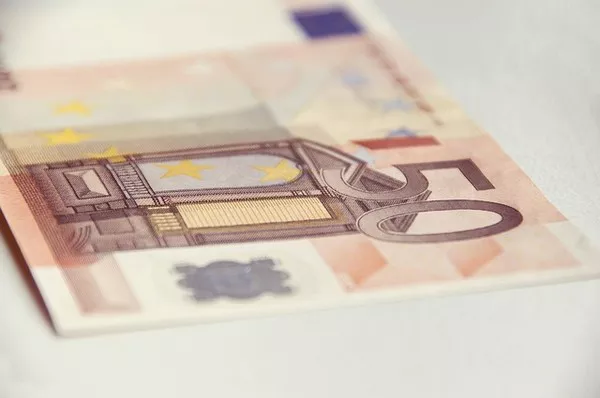The global economic landscape has undergone significant transformations over the past few decades, with China emerging as a central player. As the world’s second-largest economy, China’s role in international trade has been pivotal. The European Union (EU), a major economic bloc, has seen its trading patterns evolve, with China becoming a key partner. This article explores whether China is the EU’s largest trading partner, examining trade volumes, economic impacts, and the broader implications for the EU’s trade policy.
The Rise of China as a Global Economic Powerhouse
China’s rapid economic growth since its market reforms in the late 20th century has propelled it to the forefront of global trade. The country has leveraged its manufacturing capabilities, vast labor force, and strategic policies to become the world’s largest exporter. China’s Belt and Road Initiative (BRI), aimed at enhancing global trade routes, further underscores its commitment to establishing strong economic ties worldwide.
EU-China Trade Relations: A Statistical Overview
To determine whether China is the EU’s largest trading partner, it’s essential to analyze recent trade statistics. According to Eurostat, the EU’s statistical office, trade between the EU and China has seen consistent growth. As of the latest available data, China was the EU’s top partner for goods trade, with significant volumes of imports and exports.
Import and Export Dynamics
In 2022, the EU’s imports from China reached approximately €472 billion, marking a substantial increase from previous years. The exports to China, while lower in comparison, were also significant, totaling around €245 billion. This trade imbalance, characterized by higher imports than exports, is a notable aspect of the EU-China trade relationship.
Comparison with Other Major Trading Partners
While China’s position as a leading trade partner is clear, it’s important to contextualize this by comparing it with other major trading partners of the EU, such as the United States and the United Kingdom. In the same period, trade with the US involved exports worth around €410 billion and imports of about €232 billion. The figures for the UK, post-Brexit, were considerably lower, with exports and imports tallying around €270 billion and €210 billion, respectively.
Economic Sectors and Trade Composition
The composition of trade between the EU and China is diverse, spanning various sectors.
Industrial and Manufactured Goods
A significant portion of EU imports from China consists of industrial and manufactured goods, including machinery, electronics, and textiles. China’s competitive advantage in these sectors, driven by cost-effective manufacturing and economies of scale, underpins this trend.
Technology and Electronics
The technology and electronics sector is particularly prominent, with China being a major supplier of smartphones, computers, and other electronic devices to the EU. This trade is facilitated by Chinese firms like Huawei and Xiaomi, which have established substantial market shares in Europe.
Automobiles and Machinery
On the export side, the EU supplies China with high-value goods such as automobiles and industrial machinery. European automotive giants like Volkswagen, BMW, and Mercedes-Benz have a strong presence in the Chinese market, contributing significantly to the EU’s export figures.
The Impact of Trade Relations on the EU Economy
The deepening trade ties between the EU and China have multifaceted impacts on the European economy.
Economic Growth and Job Creation
Trade with China contributes to economic growth and job creation within the EU. The export of high-value goods supports industries across Europe, fostering innovation and sustaining employment in sectors like automotive and machinery manufacturing.
Supply Chain Integration
China’s role in global supply chains means that European companies benefit from cost efficiencies and access to a wide range of intermediate goods. This integration enhances the competitiveness of EU industries, allowing them to produce goods at lower costs and with higher quality standards.
Trade Deficits and Economic Concerns
However, the trade imbalance, with imports from China far exceeding exports, raises concerns. This deficit can impact domestic industries, leading to calls for measures to protect European businesses from unfair competition. Issues such as intellectual property rights, market access, and trade barriers are central to discussions on balancing this trade relationship.
Political and Strategic Dimensions
The EU-China trade relationship is not just an economic matter; it has significant political and strategic dimensions.
Strategic Partnerships and Diplomacy
The EU and China have established strategic partnerships to address global challenges, including climate change and international security. Trade is a cornerstone of these partnerships, fostering diplomatic engagement and cooperation on various fronts.
Trade Policy and Regulation
The EU has been proactive in shaping its trade policy towards China. The Comprehensive Agreement on Investment (CAI), although facing hurdles, aims to create a more balanced and reciprocal trade environment. The EU’s emphasis on fair competition, sustainability, and human rights influences its trade negotiations and regulatory framework.
Challenges and Opportunities
The EU-China trade relationship presents both challenges and opportunities for the future.
Navigating Geopolitical Tensions
Geopolitical tensions, particularly involving the US and China’s rise, impact the EU’s trade strategy. Navigating these complexities requires a delicate balance between economic interests and political alliances.
Embracing Technological Advancements
Technological advancements, particularly in digitalization and green technologies, offer new avenues for EU-China trade. Collaborations in areas like renewable energy and smart infrastructure can drive sustainable economic growth.
Addressing Trade Imbalances
Addressing trade imbalances through policy measures and strategic initiatives remains crucial. Strengthening the EU’s competitiveness, fostering innovation, and ensuring fair trade practices are essential steps in this direction.
Conclusion
China’s position as the EU’s largest trading partner is a testament to the profound shifts in the global economic order. The robust trade relationship between these two economic giants shapes not only their own economies but also the broader international trade landscape. While challenges persist, the opportunities for mutual growth and cooperation are substantial. As the EU continues to navigate its trade policy in an increasingly complex world, its relationship with China will undoubtedly remain a focal point of its economic strategy.


